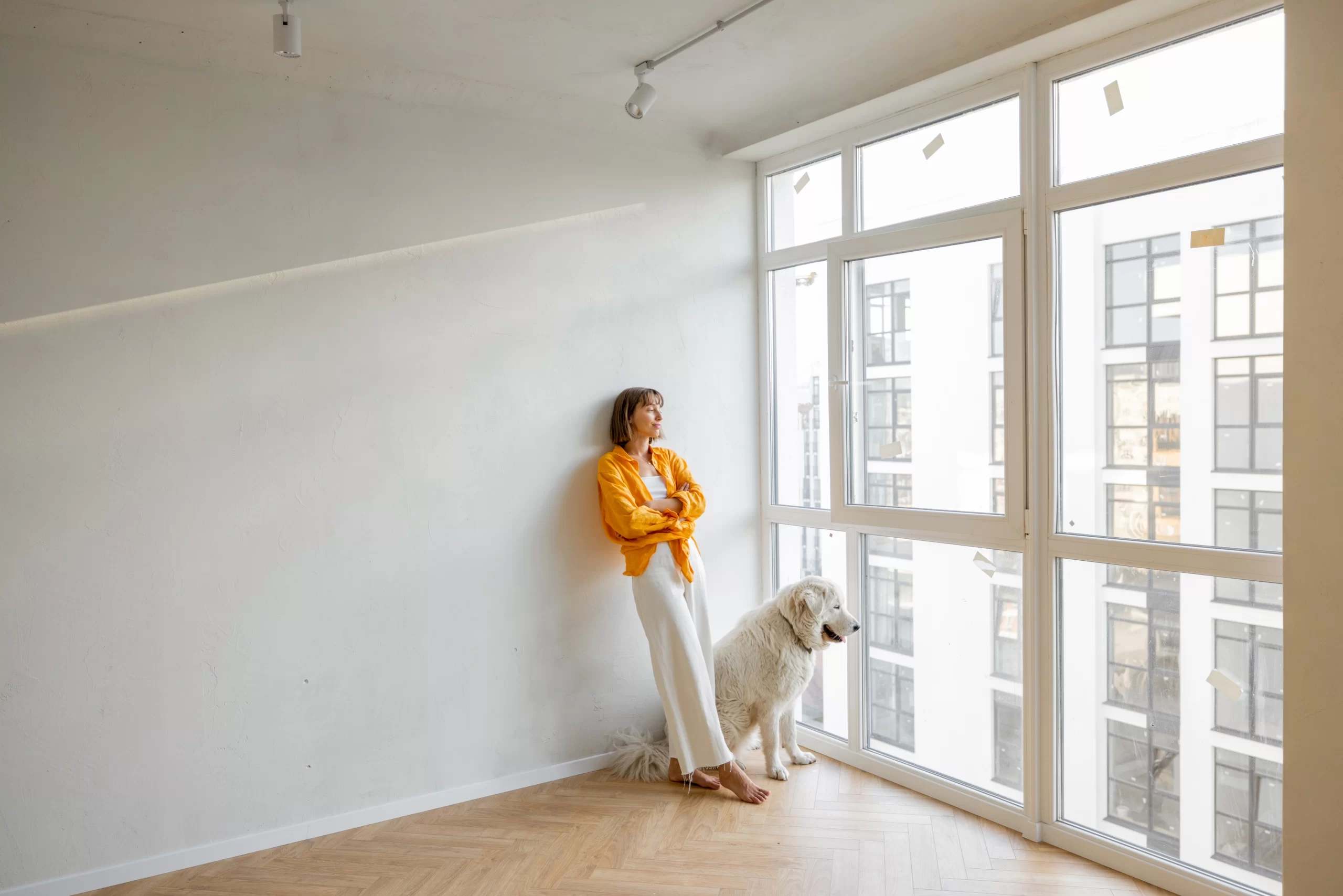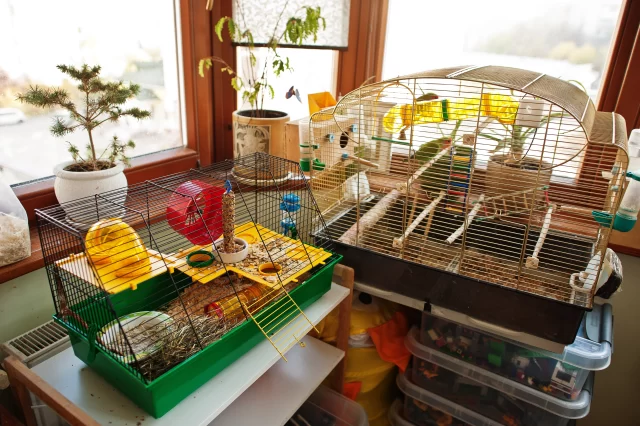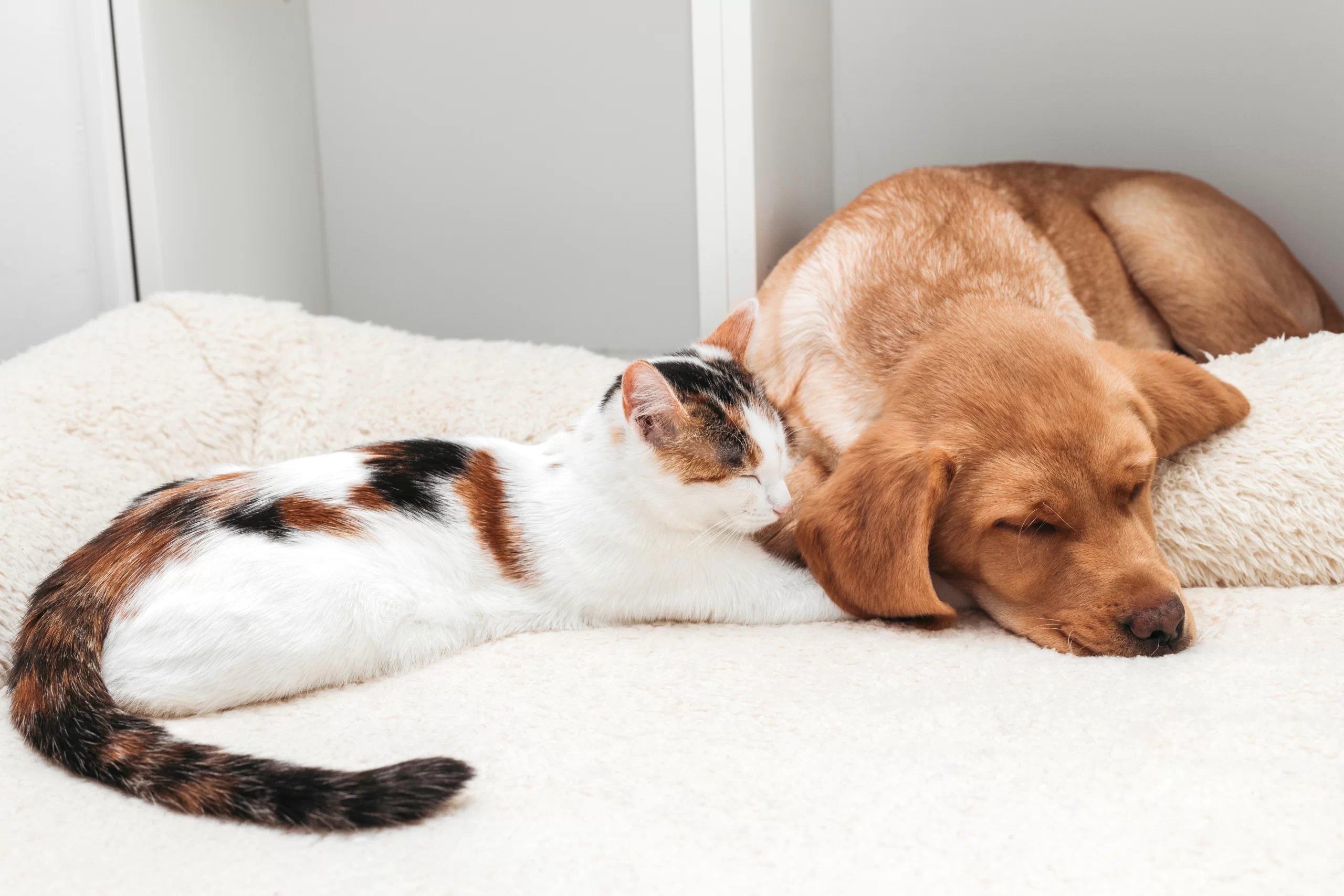Simple Guide to Apartment Living with Pets

While it’s important to consider your lifestyle before getting a pet, apartment living with pets is not entirely impossible. In fact, many pets thrive in indoor environments as long as you can meet their needs. It’s all about some TLC, and you’ll have a happy and healthy pet!
Having said that, it’s very important that you do enough research and learn about indoor living with pets. You want to ensure both the comfort and safety of yourself and your pet are assured.
In this article, we’ll take you through choosing the right pet for apartment living, how to create a safe environment for them, and the common challenges to expect.
The Benefits of Indoor Living with Pets
Like I said before, apartment living with pets is not unheard of. Many people live in high-rise apartments with their pets, like cats, birds, and all sorts of dog breeds. And truthfully, it has its benefits.
Safety
Indoor living with pets reduces the risks associated with outdoor hazards, such as traffic, predators, and diseases. It provides a controlled environment where you can better protect your pet from harm.
Climate Control
Indoor spaces offer climate control, which is particularly beneficial for pets sensitive to extreme temperatures. Your pet won’t have to endure scorching heat or freezing cold.
Cleanliness
Indoor living generally means a cleaner environment for both you and your pet. You have more control over hygiene and sanitation, reducing the risk of diseases and parasites.
Bonding
Living in close quarters fosters a stronger bond between you and your pet. You’ll spend more quality time together, enhancing your relationship.

Choosing the Right Pet for Indoor Living
Not all pets are equally suited for indoor or apartment living. When selecting a pet, consider factors such as size, activity level, and temperament. Here are some pets that typically adapt well to indoor living:
Cats
Cats are often the first choice for indoor living. They are independent animals that can thrive in smaller spaces. You just need to provide a variety of toys and scratching posts to keep them mentally and physically stimulated.
Small Dog Breeds
Some small dog breeds, such as Dachshunds, French Bulldogs, and Shih Tzus, are well-suited for apartment living. They require less space and exercise compared to larger breeds.
That’s not to say you cannot have a large dog breed. Many people live in apartments with large-breed dogs. If you decide to get a large dog breed, you must ensure you create a friendly environment that suits their particular needs, like lots of exercise to burn energy. We’ll talk about this later in the article.
Fish
Fish tanks or aquariums are excellent options for apartment living. Fish pets are known to offer a peaceful and calming effect as you watch them glide through the fish tank. This, in return, will help alleviate your stress levels.
Small Mammals
Small animals like rabbits, guinea pigs, and hamsters are adaptable to indoor environments. Unlike larger pets, they take up less space and time and are less demanding. In addition, they tend to be great with kids. However, you must ensure they have enough space to move around and explore.
Birds
Birds make for great pets. They are intelligent, sociable, affectionate, require less space, and inexpensive to feed and maintain. Plus, some birds, like ravens, crows, and mynah, can imitate human sounds and talk. Birds like budgerigars, cockatiels, and canaries are ideal for indoor living.
Creating a Pet-Friendly Indoor Environment
Regardless of the type of pet you decide to bring home, remember that they are your responsibility. You must ensure they have a safe environment to relax and be healthy. This will make both you and your pet happy. Here’s how you can do it;
Have a Designated Pet Area
Allocate a specific area for your pet, like a corner for a cat tree or a cozy nook with a bed for your dog. Having a designated space helps them feel secure. They now that they have private space where they can relax or hide.
Provide Enrichment
It’s important to enrich your pet’s indoor life with toys, puzzles, and interactive games. This is even more important if you have large dogs. They are very energetic, and boredom will lead to a lot of destruction.
Cats benefit from climbing structures and scratching posts, while dogs enjoy puzzle feeders and treat-dispensing toys.
Regular Exercise
Even in a smaller space, providing your pet with regular exercise is crucial. Take dogs for daily walks and engage in playtime. For cats, interactive toys and laser pointers can keep them active.
Litter Boxes
If you have a cat, provide a clean and accessible litter box. The general rule is one litter box per cat, plus an extra one placed in different areas of your home.
Proper Grooming
Regular grooming is essential for all pets. Brush your pet’s coat, trim their nails, and maintain their hygiene to keep them comfortable and healthy.
Natural Light
Ensure your indoor space has access to natural light. Pets, like humans, benefit from exposure to sunlight. Provide sunny spots near windows for your pet to bask.
Pet-Proof Your Home
Pet-proof your living space by securing toxic substances, covering electrical cords, and removing potential hazards. This is especially important for puppies and kittens.
For cats, you can check if installing a catio on the balcony is possible. This will provide them with an excellent but safe space to experience the outside world while still in the house.

Challenges of Apartment Living with Pets
While indoor living offers numerous advantages, it also presents some challenges:
Boredom
Without outdoor exploration, pets may become bored or anxious. Ensure you provide mental and physical stimulation to prevent behavioral problems.
Exercise
Some pets, particularly dogs, require more exercise than can be provided indoors. Regular outdoor walks are essential to meet their activity needs.
Space Limitations
In smaller apartments, space can be limited. Be mindful of your pet’s need for movement and exercise, and consider their size and activity level when choosing a pet.
Allergies
Some family members may have allergies to pet dander, which can be more concentrated in indoor environments. Regular cleaning and air purifiers can help manage allergens.
Conclusion
Indoor and apartment living with pets can be a rewarding experience for both you and your furry or feathered friend.
By creating a pet-friendly environment, providing mental and physical stimulation, and selecting a pet that suits your space and lifestyle, you can ensure a happy and healthy life.
Remember that your pet’s well-being should always be a top priority, and with the right care and attention, you can enjoy a loving and fulfilling relationship with your indoor pet.

